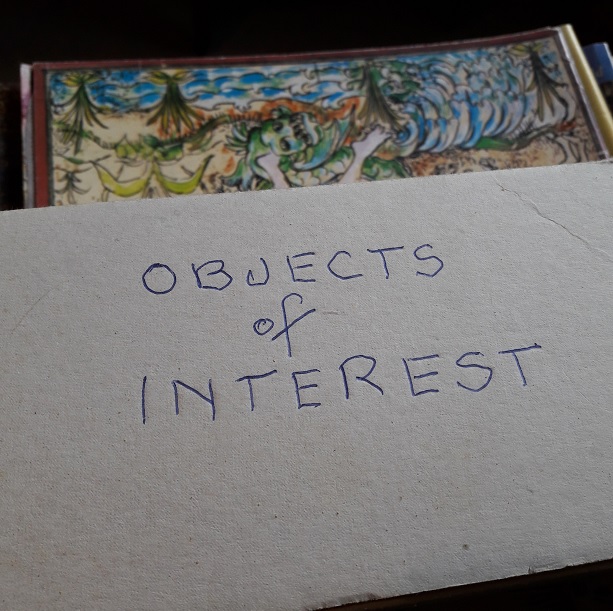One weekend, a house full of stuff and a mission to clear it all out
For a lot of people there will come a time when they need to help an older family member downsize their belongings - whether it’s to move into a smaller home, a rest home or retirement community. I found myself in this situation recently. I was called on to help with a family member’s house, as she had moved into a rest home and wouldn’t be returning home.
This kind of event can be a difficult time for everyone. It’s often emotional for the family member who is making the move into a new phase of their life. It’s also trying for everyone helping. If you have a few family members in one place, that alone can be stressful and can bring up unexpected emotions.
Everyone’s situation will differ; but in this case my family member had nearly everything she could fit already in the rest home. With the exception of a couple more boxes of sentimental items we chose to keep aside in case she asked for them, everything in the house would be either auctioned, shipped to family members, donated to local charity shops, or discarded.
For this job I knew that it’d just be two of us doing everything and that I would be doing the vast majority of the work, including the work up & down ladders and the lifting & moving of heavy stuff. So I made the decision to work through the house together as a pair, rather than splitting up. With a job like this it would often be best to divide & conquer, but only when everyone has adequate mobility and the ability to shift items, which is why working together was the way to go for us. Also; I wasn’t happy to be the sole decision maker on everything I might come across, so it was good to have back-up for that.
In preparation for the task ahead I:
had a think about the categories of items we would find and what we would do with each
visualised each room and the storage places in each room
mapped out a plan of attack in terms of which rooms to tackle when
estimated approximately how much I thought we could get through in a set period of time eg - a morning, or each day
Some of the absolute treasures we found. Luggage that sailed to the UK and back in the 1950’s
In terms of setting the pace I wanted it to be err on the side of caution. If you go at a pace where you feel like you’d be finished with heaps of time to spare, it allows room for inevitable setbacks like finding unexpected items, conflicts over what to do with certain items, or finds that might bring up emotions.
Setting an ambitious pace might not be the right approach for everyone, though. You may have a situation where a lot of emotions come up along the way, which will make the process a slower one. Or it may not be as clear for you as to what should happen to certain categories of items. Setting a pace that is realistic for you will make the process a whole lot less painful.
We got started by working on smaller rooms and nooks & crannies I knew were scattered about between rooms. It was a great way to set the pace, feel comfortable working with someone else’s belongings and get motivated to tackle the bigger rooms and more daunting jobs.
Some of the ways to get started and make great progress quickly are to:
start with large items which you can make an easy decision with. You’ll feel good for clearing out decent amounts of space right off the bat
start with items that people are unlikely to have an emotional attachment to. Things like everyday kitchen items, towels and sheets, media like DVDs, board games & hobby supplies and bathroom items are good examples
I won’t delve into all the specifics of what we were sorting through, instead I’ll share the things I learned along the way. There are times when it occurs to you that it is odd to be sorting through someone else’s life - well - what they kept throughout their life - but when circumstances lead you to be the ones doing it, you just have to get on with it. For moments when you feeling overwhelmed or distracted, I found the trick is to re-focus on whatever one task you have in front of you and just take it one small step at a time. If you find yourself getting easily sidetracked or ruminating in a certain area of the house or with particular items, moving on to a different area or category of item can give you a welcome break and re-motivate you.
You know you’re in for a good time when you come across envelopes like this
One thing we were certain of was that there would be a number of collections in the house. Not just from one person, but three or more. So; a lot of history to be found in the house and multiple people’s belongings. Along the way we encountered collections of porcelain & china, silverware, jewellery, art work, embroidery & other needlepoint works and supplies, books, photographic slides, stamps and Royal memorabilia, primarily from the Queen’s Coronation in 1953.
In this process I actually learnt a couple of things about some of my family members that I had never known before. Things that explained a lot about who they were and what they liked for as long as I had known them and longer. Gaining this deeper understanding really stopped me in my tracks and made me pause what I was doing for longer than I had all weekend.
Even though the job called for sorting, organising and clearing out at pace, we made time to stop and reflect on a item or a time in our family’s history. There were even some laughs. In your downsizing project, if time is limited, I would suggest setting yourself time limits on the breaks you take to reminisce. You might like to make rules like “all photos go to one side, to be looked at together when we’re all done” or “we’ll have a look at the whatchamacallit collection after dinner”. Stopping often to look at items will slow down the process dramatically.
At the end of a downsizing job I recommend taking a quick look over groupings of items you’ve chosen to either discard or keep. You may have gotten more ruthless as the job progressed. Did you say at the start of the process that you’d keep items you now could easily discard? Or vice versa? Do you want to take back any items you were hasty to put in the donate pile? Take the time to look over it all, to lessen the chance of regret later.
And one last note on sentimentality; if the house you’re working in holds a lot of memories for you, give yourself some time to take a final look - a last walk through. Take photos if you want. They may well be something the whole family can enjoy later.
Expect the unexpected! You never know what you might find
It dawns on me that this is someone else’s life we’re going through, but aside from a few things like photographs, and sentimental items that mark a certain time in their life, they’re just belongings and very few of them matter in the end.
There are a few things that this process has confirmed for me:
you get to be able to estimate pretty quickly at what speed you can get through certain areas/rooms/groups of items
even if you know your family member has a lot of stuff, it’s not until you have to touch everything to sort through it that you understand the sheer volume of things and the size of the task
look in every nook & cranny - seriously. Have you looked in the roof space, under the house, the darkest recesses of the garden shed or attic?
don’t assume you know everything about the project: the house or the person whose home you’re working through - you might just learn something new about them!
be selective about what you yourself choose to treasure - otherwise it might be your family sorting through your lifetime’s collection of clutter
and lastly - get your own affairs in order, so someone else doesn’t have to
If you’re wondering what will happen to your belongings down the line -
make a will: if there are specific items you want to go to certain people, detail that here
let people know what your treasures are and why: if an item has a history that isn’t widely known, be sure to share it with others. Better yet - write it down! Make sure there is a digital copy of the storey, too and store the history with the item if possible eg- stick the history to the back of the art piece the story is about
This stained glass window brings back lots of memories of time spent at the house, so I took some photos of it
If it looks like you’re going to be downsizing someone else’s belongings soon -
Talk to your family member:
find out what their expectations are
are there any generalisations you can make throughout the process eg - any newspapers or magazines can be recycled, all porcelain items should be put aside for sale, all photography related stuff is to go to so-and-so
find out the specifics of what they might like gifted to certain family members
speak with our other family members - find out if they do have expectations in terms of items that might be gifted
In the end we got through the whole house in the limited time available.
The two things I learned are:
to expect the unexpected, look high & low for possible storage spots
stay well hydrated, as it’s a full-on process
We divided & packed up items appropriately, donated items to a (very happy) local Hospice shop and we learned new things about members of our family and made some cool finds. And best of all, our family member is happily settled with her most precious belongings.
If you have a downsizing project you’d like help with, please get in touch and we’ll work alongside you to get the job done.





